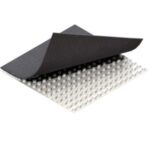# Uncooled Thermal Imaging Core Technology and Applications
## Introduction to Uncooled Thermal Imaging Core
Uncooled thermal imaging cores are revolutionizing the way we perceive and interact with the world around us. Unlike traditional cooled thermal imaging systems, uncooled cores operate at ambient temperatures, eliminating the need for complex and expensive cooling mechanisms. This technology has opened up a wide range of applications across various industries, from security and surveillance to medical diagnostics and industrial inspections.
## How Uncooled Thermal Imaging Cores Work
At the heart of an uncooled thermal imaging core lies a microbolometer, a type of thermal sensor that detects infrared radiation. When infrared radiation from objects in the environment strikes the microbolometer, it causes a change in the sensor’s electrical resistance. This change is then converted into a thermal image, allowing us to visualize temperature differences and heat patterns.
The key advantage of uncooled thermal imaging cores is their ability to operate without cryogenic cooling. This not only reduces the size, weight, and cost of the imaging system but also increases its reliability and operational lifespan. The absence of moving parts in the cooling system further enhances the durability of these cores, making them ideal for use in harsh environments.
## Applications of Uncooled Thermal Imaging Cores
### Security and Surveillance
Uncooled thermal imaging cores are widely used in security and surveillance systems. Their ability to detect heat signatures allows for effective monitoring in complete darkness, through smoke, and in adverse weather conditions. This makes them invaluable for border security, perimeter monitoring, and critical infrastructure protection.
### Medical Diagnostics
In the medical field, uncooled thermal imaging cores are used for non-invasive diagnostics. They can detect abnormalities in body temperature, which may indicate inflammation, circulatory problems, or even certain types of cancer. This technology is particularly useful in early detection and monitoring of various medical conditions.
### Industrial Inspections
Industries such as manufacturing, energy, and construction benefit greatly from uncooled thermal imaging cores. These cores can detect overheating components, insulation defects, and structural weaknesses, allowing for preventive maintenance and reducing the risk of equipment failure. In the energy sector, they are used for inspecting power lines, transformers, and other critical infrastructure.
### Automotive and Transportation
The automotive industry is increasingly adopting uncooled thermal imaging cores for advanced driver-assistance systems (ADAS). These systems enhance night vision capabilities, improve pedestrian detection, and increase overall road safety. In transportation, thermal imaging is used for monitoring railway tracks, detecting obstacles, and ensuring the safety of both passengers and cargo.
## Future Prospects
The future of uncooled thermal imaging core technology looks promising. Ongoing research and development are focused on improving the sensitivity, resolution, and affordability of these cores. As the technology continues to evolve, we can expect to see even more innovative applications in fields such as agriculture, environmental monitoring, and consumer electronics.
In conclusion, uncooled thermal imaging cores are a game-changer in the world of thermal imaging. Their versatility, reliability, and cost-effectiveness make them an essential tool across a wide range of industries. As technology advances, the potential applications of these cores will only continue to grow, paving the way for a safer, more efficient, and more connected world.
Keyword: uncooled thermal imaging core
